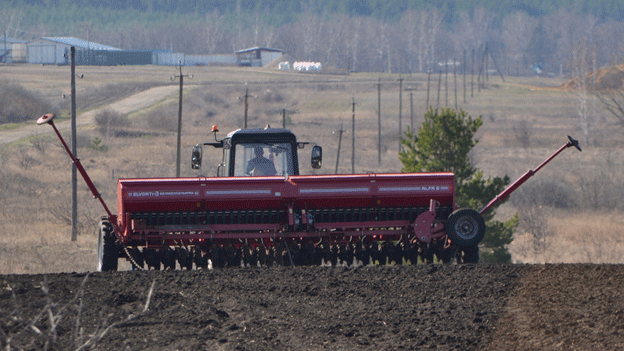As the 2024 spring season progresses, farmers in Sapozhkovsky District, Ryazan Region, have begun sowing barley, marking an important phase in regional fieldwork. According to the local administration’s Department of Agriculture, Natural Resources, and Ecology, as of April 3, more than 50.7% of fallow land (12,121 hectares) has already been harrowed — a key step in spring soil preparation.
Alongside this, approximately 4,177 hectares of winter crops have been fertilized, reaching 73% of the planned volume. These early interventions are critical to securing strong yields and improving soil nutrient balance after winter dormancy.
One of the leading enterprises in the region, KFH “Bychkova V.N.”, officially began barley sowing on April 3, with 32 hectares planted on the first day. “Yesterday we moved the machinery to the fields, and today we started sowing,” shared Sergey Badaev, chief agronomist at the farm. In total, the farm plans to sow:
- 407 hectares of barley
- 470 hectares of spring wheat
- 470 hectares of soybeans
- 350 hectares of sunflower
- 300 hectares of peas
- 800 hectares of winter crops (already planted)
To meet these targets, 11 units of agricultural machinery are currently in operation, performing cultivation, pre-sowing fertilizer application, and rolling and mulching of sunflower fields.
Meanwhile, KFH “Petin S.V.” continues sowing peas, having already covered 220 hectares out of a planned 600. With weather conditions still favorable in early April, producers across the district are focusing on maximizing planting efficiency to avoid bottlenecks later in the season.
How Sapozhkovsky Compares with National Trends
Nationally, Russia has been ramping up spring sowing efforts across major crop-producing regions. According to the Russian Ministry of Agriculture, by early April 2024, over 4.9 million hectares of spring crops had already been planted across the country — approximately 23% of the total planned area.
Barley, a crucial feed grain and export commodity, continues to hold strategic importance in Russian agriculture. Despite a lower national harvest in 2023 (from 21.15 million tons to 16.7 million tons), rising prices are fueling interest in expanding sowing areas for the 2024/25 season.
At the same time, sunflower and soybeans are gaining momentum as high-margin crops, supported by strong domestic processing demand and export potential. This reflects in the crop choices of farms like KFH “Bychkova V.N.” — highlighting a diversified risk-managed approach.
The spring field season is well underway in Sapozhkovsky District, with farms efficiently balancing multiple crops and technical operations. With barley sowing officially started and other spring crops in progress, local producers are making the most of favorable conditions to stay on schedule. The current pace of work, supported by strong machinery use and agronomic planning, sets a positive tone for the 2024 growing season.
Error





